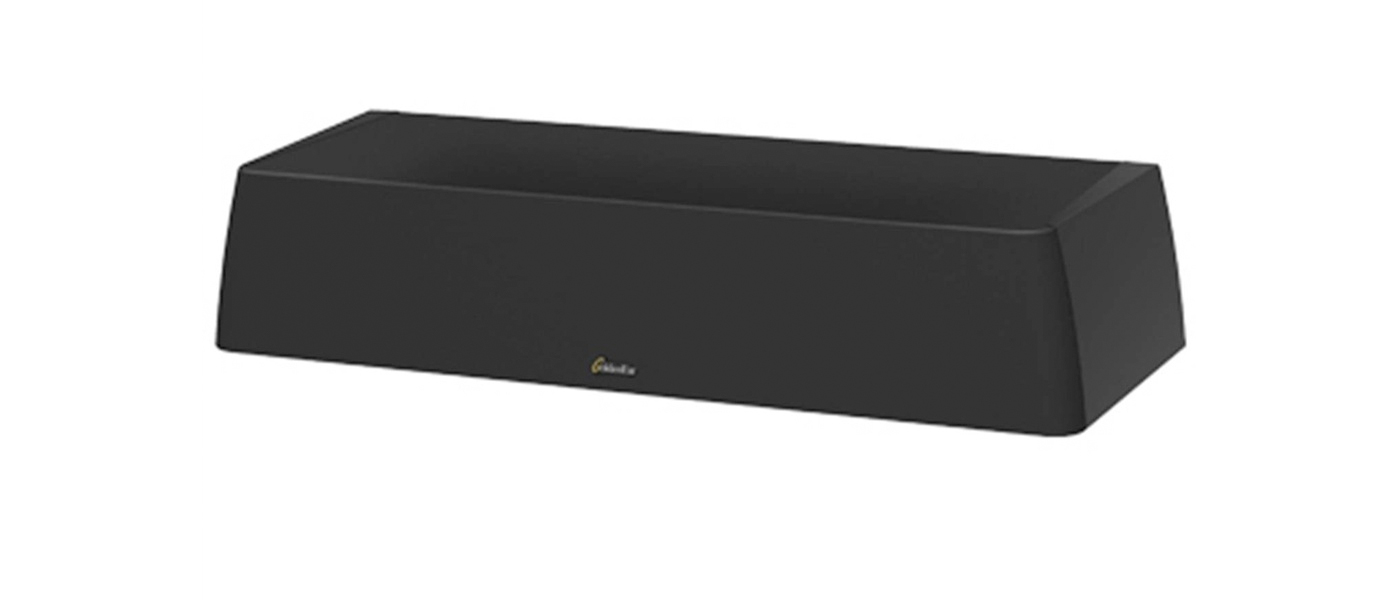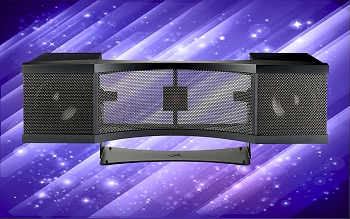Introduction
MartinLogan is most famous for their electrostatic speakers (ESLs). I remember many years ago hearing their full-range model and was astonished at the transparency. Since that time, they have produced ESLs of varying sizes, and in “hybrid” form, meaning that a cone woofer takes care of the low frequencies, which smaller ELS panels cannot reproduce. When home theater became a prominent market, they released the Stage, which used a dome tweeter, ESL panel for the midrange, and cone woofers. The newest iteration of the Stage line is the Stage X, which has a thin film tweeter (called “Folded Motion” by MartinLogan). This type of tweeter is part of the flat panel family of speakers, which includes ESLs, Ribbons, and Planar Magnetic speakers. So, with the Stage X, the high frequencies and midrange are now handled by flat panel technology.
SPECIFICATIONS
- Design: Hybrid Electrostatic Center Channel Speaker
- Drivers: One 1.25″ Thin Film (Folded Motion) Tweeter, One 7.5″ x 18″ Electrostatic Midrange Panel, Two 6.5″ Aluminum Cone Woofers
- MFR: 69 Hz – 22 kHz ± 3 dB
- Sensitivity: 90 dB/2.83V/M
- Nominal Impedance: 4 Ohms
- Crossover Frequencies: 450 Hz, 2.7 kHz
- Dimensions: 9″ H x 34.6″ W x 10.3″ D
- Weight: 39 pounds
- MSRP: $3,495 USD
- MartinLogan
- Tags: MartinLogan, Electrostatic Speakers, ESLs, Center Channel Speakers, Audio, Home Theater
The Design
The Stage X has a thin film tweeter which is pleated and situated between permanent magnets. The music signal flows through the thin film. Pleating the thin film allows for higher efficiency than conventional ribbon tweeters, and is stronger as well. Here is a photo of the Stage X tweeter.
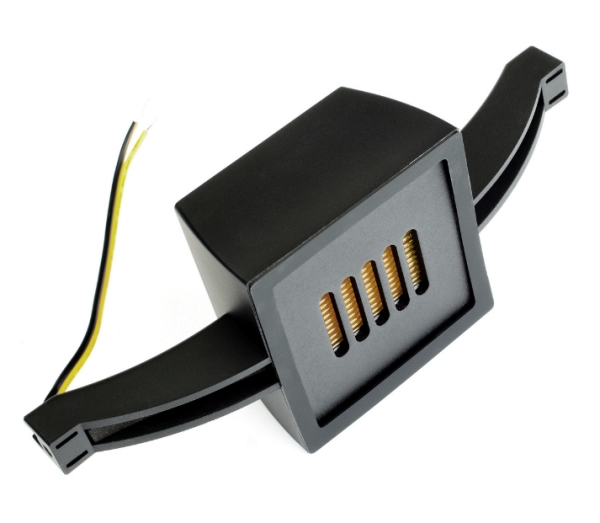
This tweeter is mounted on the rear and in the center of the ESL panel.
ESLs work by having a very thin plastic membrane mounted between two closely spaced perforated metal stators. A static DC bias voltage is applied to the membrane, and the speaker voltage goes to the stators. As the voltage on the stators varies in frequency and intensity, the static charged membrane is attracted and repelled accordingly, and this produces the sound. A ribbon works by having a thin metal strip, which sits between two sets of permanent magnets. When the audio signal passes through the metal strip, it produces an electromagnetic field that is attracted and repelled by the permanent magnets according to the variation in the audio signal. What’s called “Quasi Ribbon” consists of a circuit path etched onto a thin plastic ribbon. The current passes through the circuit, and the entire plastic ribbon moves. The Stage X uses a thin film with a voice coil printed in it, and then the film is pleated. The audio signal passes through the printed voice coil, and the thin film then moves, producing the sound.
The ESL panel itself, handling the midrange frequencies, is 7.5″ x 18″ in size, and is curved inward, towards the rear of the speaker, as shown below. You can also see that the grille is made up of very small round holes that look hexagonal due to the insulation that is applied. There are two of these steel panels with the holes, placed very close together. The holes have a very thin boundary, to maximize the amount of air that can flow through the grille. On the left side, the grille continues, but one of the woofers is behind it. The ESL panel is in the middle. You can see the tweeter through the center of the ESL panel, and some light from my equipment rack is seen through the right side. So, when looking directly at the speaker, the middle is transparent, but the sides have the cone woofers and their enclosures behind them.

Two 6.5″ woofers with small sealed enclosures are situated at each end of the speaker.
The rear of the Stage X can be seen in the photo below, and you can see the tweeter in the middle of the ESL panel. There is a mounting bracket attached which can be rotated forward and backward. It is broad enough that it can sit on a speaker stand, but it is best to bolt the speaker to the stand rather than just letting it sit on it, unattached. You can also bolt it to a wall, for example, underneath a flat panel HDTV that is also mounted to the wall.
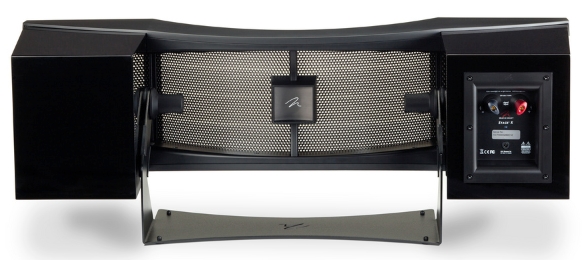
The speaker binding posts are five-way. A small jack is at the bottom for connecting a wall-wart cable that supplies bias voltage to the thin membrane between the stators.
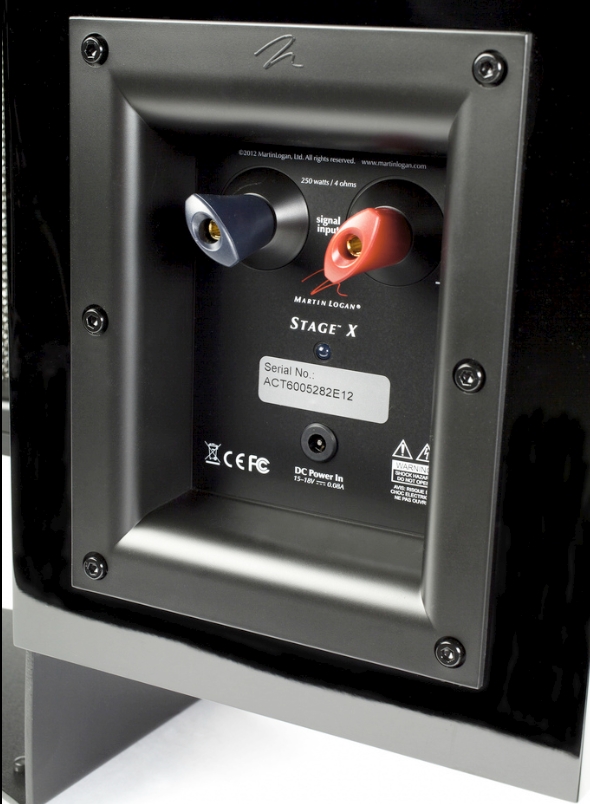
Here is what the Sage X might look like in a home theater setting.

Besides black, the Stage X also comes in a very attractive cherry veneer, shown below. This is the color of the review sample I received.
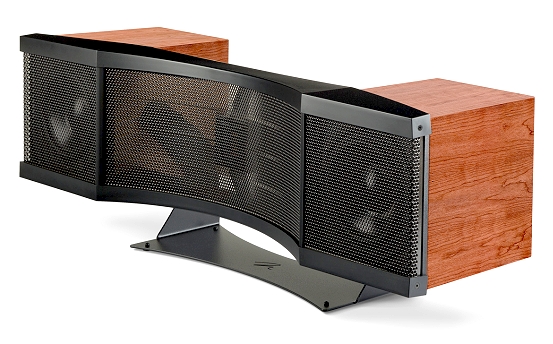
In Use
I tested the MartinLogan Stage X with other ESLs, including Threshold ES-500 Full-Range ESLs for the front left and right, and Final Sound ESLs for the rear. I cross over the front left and right ESLs at 60 Hz, and the rear ESLs at 80 Hz, using three subwoofers, one for the front left, one for the front right, and one for the rears. For the Stage X listening test , I crossed over the Stage X at 60 Hz, and routed its low frequencies to the front left and right subwoofers. An OPPO BDP-95 served up the entertainment, followed by a Classé SSP-800 processor and Classé CA-5200 power amplifier. Cables were Emotiva and Wireworld.
I really do enjoy flat panel speakers, and particularly ELS, but one of their problems is fall-off as you move off-axis. I was shocked to find that this was not occurring with the Stage X, which I assume is due to a carefully designed curve to the panel. This is the only center channel speaker I have ever tested that didn’t have noticeable falloff. So, I was treated to the wonder of ESL center channel sound, and I could sit in my regular recliner-rocking chair off to the right side and still hear every word and sound with articulate, detailed clarity.
House of Flying Daggers is a great movie for testing speakers because of the dance in chapter 3, where the girl uses her costume to strike drums placed in a circle around her. The male star first throws pebbles onto the drums, and she mimics this by striking the same drums with the arms of her robe. At the end of the dance, he throws the entire bowl of pebbles onto the floor and the soundstage erupts as she strikes all the drums. What I wanted to hear with this test, was how the Stage X responded to the sharp sounds of the bowl full of pebbles striking the floor. I usually get up from my chair and move to the center in this scene as it is extremely “surround sound” in nature. However, I was able to sit in my chair off to the side, and the Stage X reproduced the crystalline sound of all the pebbles crashing to the floor, without any fall-off. No matter where I stood in the room, the clarity of that scene remained the same. I don’t know how MartinLogan did it, but all I can say is WOW !

Jaws is another movie where the center channel is being used a lot for high frequencies, namely screaming when the shark bites, and all the water splashing. It came through very clearly, and horrified me yet once again in this classic tale of what everyone fears (at least they started being afraid when the movie was released) when they go into ocean water.

Lawrence of Arabia has finally been released on Blu-ray, and since it was shot on 70mm film, the high def image is spectacular. The musical score is phenomenal, and the Stage X gave me the full monty, even off to the side. No coloration of any kind. Smooth, transparent, and detailed. The midrange was slightly laid back compared to all-cone center channel speakers, like my Paradigm Reference Signature C5, but that is easily dealt with using room correction. On the other hand, you may prefer a laid back midrange, as I do.

This set of violin concertos (2L38SACD), recorded in DSD 5.1 are a good test for the Stage X because of the high frequencies that the soloist violin plays. Violins can sound tizzy or scratchy, and otherwise unappealing if the tweeter is not high quality. But, the ribbon tweeter of the Stage X did Marianne Thorsen the great honor of reproducing her, I’m sure very expensive, violin, in a full bodied, natural sound with no sharp edges.
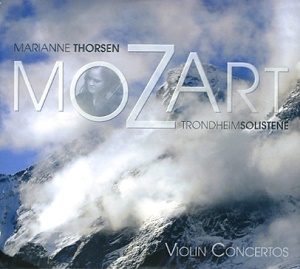
On the Bench
I tested the Stage X with a calibrated microphone placed 1 meter on-axis, except where specified, from the center of the speaker, which was 24″ off the floor on a stand.
At 60 Hz (output from the woofers), THD+N was 1% at 90 dB. At 50 Hz, distortion rose significantly, so the speaker is tuned for best use at 60 Hz and above.
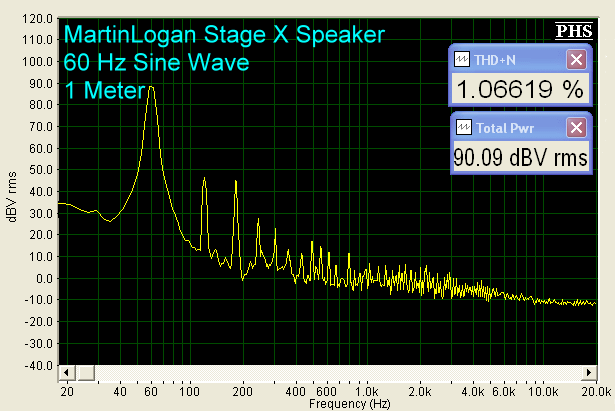
At 1 kHz (output from the ESL midrange panel), distortion dropped to well below 1%. This is excellent.
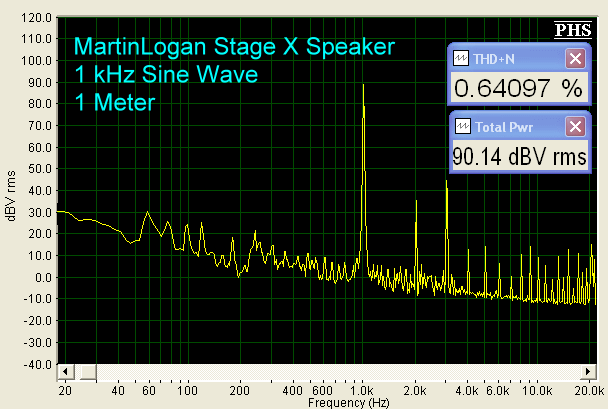
And at 10 kHz (output from the tweeter), distortion was less than 0.5%. Again, quite good.
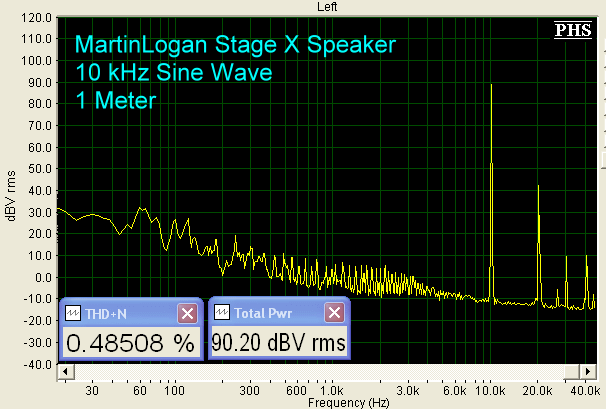
Here is the room frequency response, at 1 meter, on-axis. You can see the dip in the midrange that I heard. Again, this can be managed, if you wish, with your processor’s room correction feature. Response falls off rapidly below 60 Hz.

At 450 off-axis, the high frequencies are down only a very small amount compared to most other speakers.
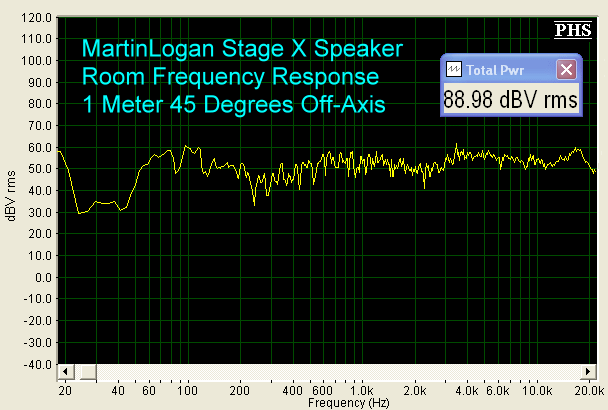
The impedance appears to average about 6 Ohms, with a high of 16 Ohms at 10 Hz and a low of 2.7 Ohms at 3.8 kHz. This is an improvement over older ESLs, which dipped below 1 Ohm at 20 kHz. So, it would appear that a good quality receiver would be able to drive this speaker.
The phase deviation from 00 is mostly capacitive, which is not surprising since an ESL is like a big capacitor.
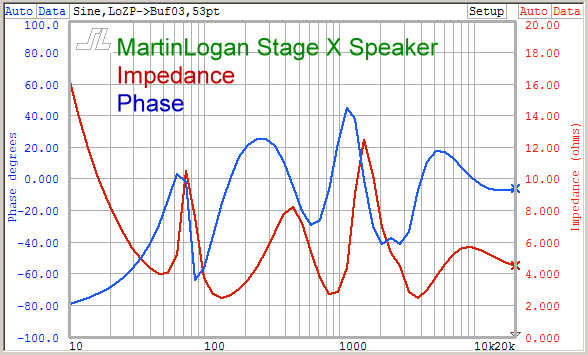
Conclusions
Being a huge fan of electrostatic speakers, I have always been worried about dealing with the center channel, because there weren’t any electrostatic center channel speakers available that covered the high frequencies as well as the midrange. I didn’t have the opportunity to test the original Stage version of this speaker, but I can say that the Stage X is one superb-sounding center channel, with everything above 450 Hz being covered by flat panel speaker technology. Having the ESL portion in the midrange is a definite plus, as this is the most important region of the audible spectrum.
If you are a flat panel speaker aficionado, or even if you are not, but you sit off to the side of the sweet spot with cone speakers and don’t like the sound fall-off, you definitely should audition this marvelous center channel speaker.


